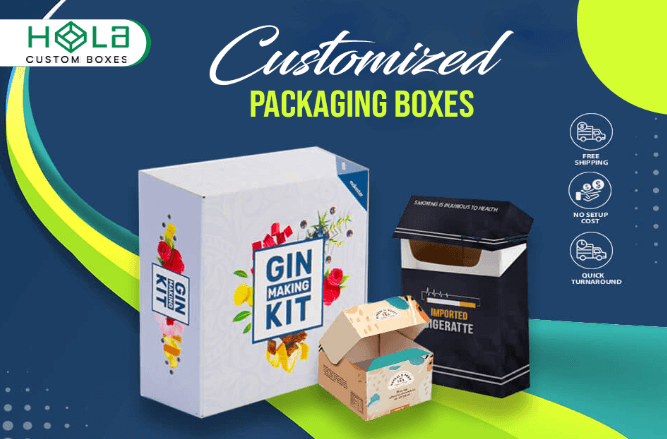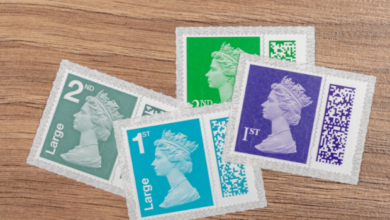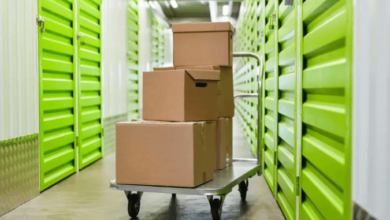Sustainable Custom Packaging: Innovative Solutions Explored

Looking to make a positive impact on the environment? Explore innovative sustainable packaging solutions with our latest article.
We’ll dive into eco-friendly materials, minimalist design trends, and reusable options to help you make a difference.
From e-commerce to branding, discover how sustainable packaging can elevate your business while reducing your environmental footprint.
Let’s revolutionize the way you think about custom packaging.
Key Takeaways
- Consider environmental impact and durability when selecting materials for sustainable custom packaging.
- Utilize eco-friendly printing techniques such as water-based inks and printing on recycled paper to reduce the overall environmental impact of the packaging process.
- Embrace minimalist packaging design trends to reduce material usage, create a streamlined look, and facilitate efficient production processes.
- Incorporate biodegradable and compostable options into packaging design, including bioplastic packaging and compostable paper packaging, to align with sustainability goals.
Sustainable Materials for Custom Packaging
When selecting sustainable materials for custom packaging, consider the environmental impact and durability of the chosen substances. Look for materials that are biodegradable, recyclable, or made from renewable resources.
For example, using cardboard made from recycled materials can reduce the need for virgin fibers and minimize the overall environmental impact. Additionally, consider materials like molded pulp or mushroom packaging, which aren’t only biodegradable but also offer excellent protection for fragile items.
It’s important to prioritize durability to ensure that the packaging effectively protects the contents throughout the supply chain, reducing the need for replacement or additional protective materials.
Eco-Friendly Printing Techniques
To continue the discussion on sustainable custom packaging, explore eco-friendly printing techniques that complement the use of environmentally responsible materials and further reduce the overall environmental impact of the packaging process.
- Water-Based Inks: These inks are made from natural ingredients and don’t contain harmful chemicals, reducing air pollution and minimizing health risks for workers.
- Recycled Paper and Cardboard: Printing on recycled materials reduces the demand for new paper production, conserving trees and energy while also decreasing water and air pollution.
- Digital Printing: This technique produces less waste and uses fewer chemicals compared to traditional printing methods, resulting in a smaller environmental footprint.
Minimalist Packaging Design Trends
You can integrate minimalist packaging design trends with eco-friendly printing techniques to create visually impactful and sustainable custom packaging.
Minimalist design focuses on simplicity, using clean lines, and minimal graphics to convey a message. By applying this approach to packaging, you can reduce material usage and create a more streamlined, modern look. Embracing negative space and using natural, earthy colors can further enhance the eco-friendly appeal of the packaging.
Additionally, minimalist design can also facilitate efficient production processes, reducing waste and energy consumption. Consider using recyclable or biodegradable materials for your minimalist packaging to align with sustainable practices.
Biodegradable and Compostable Options
Integrate biodegradable and compostable options into your minimalist packaging design to further enhance its eco-friendly appeal and environmental impact. By incorporating these sustainable materials, you can significantly reduce the environmental footprint of your packaging, contributing to a healthier planet.
Consider the following options to maximize the benefits of biodegradable and compostable packaging:
- Bioplastic Packaging: Utilize packaging made from plant-based materials such as cornstarch or sugarcane, offering a renewable and biodegradable alternative to traditional plastics.
- Compostable Paper Packaging: Opt for packaging made from compostable paper materials, which can easily break down in commercial composting facilities, minimizing waste and pollution.
- Eco-friendly Inks and Adhesives: Choose biodegradable and non-toxic inks and adhesives for labeling and branding your packaging, ensuring that every component aligns with sustainable practices.
Innovative Reusable Packaging Solutions
Consider incorporating durable, multi-purpose containers into your packaging design to provide innovative reusable solutions that reduce waste and promote sustainability.
Reusable packaging offers a cost-effective and environmentally friendly alternative to single-use materials. By integrating durable materials such as glass, metal, or high-quality plastics, you can create packaging that customers can reuse for storage, transportation, or other purposes.
Read also What Happens When You Change Muffler?
Additionally, designing packaging with a focus on reusability encourages a circular economy and reduces the overall environmental impact of your products. Implementing innovative closure systems and modular designs can further enhance the usability and appeal of reusable packaging.
Embracing these innovative solutions not only aligns with sustainable practices but also enhances the value and appeal of your products to environmentally conscious consumers.
Sustainable Packaging Innovation in E-commerce
To maximize sustainability in e-commerce, prioritize the integration of innovative packaging solutions that promote reusability and minimize environmental impact. Embracing sustainable packaging practices can significantly reduce the ecological footprint of e-commerce businesses.
Here are three key strategies to drive sustainable packaging innovation in e-commerce:
- Opt for Minimalist Design: Encourage the use of minimalist packaging designs that reduce material usage and waste generation, while still ensuring product safety during transit.
- Leverage Eco-friendly Materials: Emphasize the use of biodegradable or recyclable materials in packaging to minimize environmental impact and encourage responsible disposal practices.
- Implement Returnable Packaging Programs: Initiate returnable packaging programs to enable customers to return packaging materials for reuse, reducing the overall packaging waste in e-commerce operations.
Impact of Sustainable Packaging on Branding
Embracing sustainable packaging practices can significantly enhance your brand’s image and consumer perception, fostering a positive environmental impact.
By utilizing eco-friendly materials and reducing waste, your brand demonstrates a commitment to sustainability, resonating with environmentally conscious consumers. This can lead to increased brand loyalty and positive word-of-mouth marketing.
Moreover, sustainable packaging provides an opportunity to communicate your brand’s values and dedication to responsible business practices, setting you apart from competitors. Consumers are increasingly drawn to brands that prioritize environmental sustainability, and by aligning your packaging with these values, you can create a strong, positive brand association.
Ultimately, the impact of sustainable packaging on branding extends beyond just the environmental benefits, influencing how your brand is perceived and valued by consumers.





